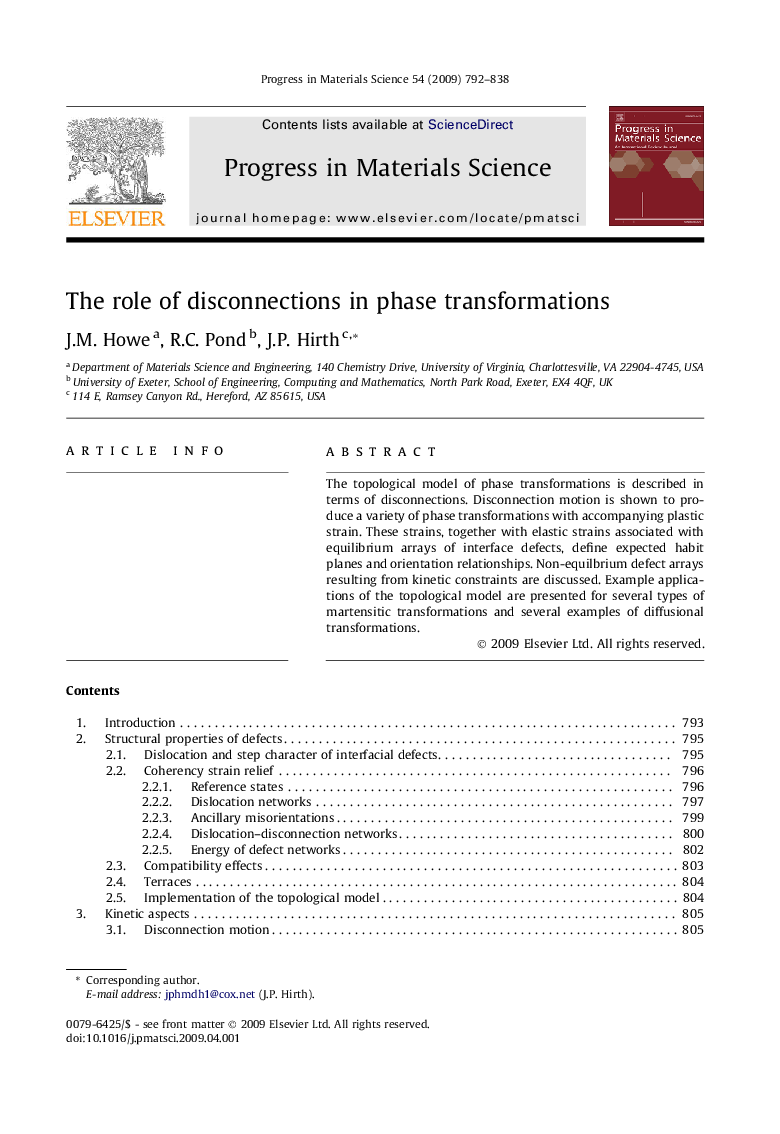| Article ID | Journal | Published Year | Pages | File Type |
|---|---|---|---|---|
| 1655987 | Progress in Materials Science | 2009 | 47 Pages |
Abstract
The topological model of phase transformations is described in terms of disconnections. Disconnection motion is shown to produce a variety of phase transformations with accompanying plastic strain. These strains, together with elastic strains associated with equilibrium arrays of interface defects, define expected habit planes and orientation relationships. Non-equilbrium defect arrays resulting from kinetic constraints are discussed. Example applications of the topological model are presented for several types of martensitic transformations and several examples of diffusional transformations.
Related Topics
Physical Sciences and Engineering
Materials Science
Nanotechnology
Authors
J.M. Howe, R.C. Pond, J.P. Hirth,
